Lumbar osteochondrosis is one of the most common and frequently diagnosed forms of osteochondrosis, also known as “sciatica”.The frequency of this disease is extremely enormous - in about 82% of cases, radiculitis of the lumbosacral region is diagnosed in patients who go to the doctor with complaints of severe pain in the lower back.
Description of the disease
Osteochondrosis in the sacral or lumbar region occurs equally frequently in women and men, most commonly in middle age and older age.Medical practice shows that this particular disease is at the forefront of the main causes of temporary or permanent disability, and in some cases disability.For this reason, the treatment of pathology must be carried out with the utmost care, since osteochondrosis can pose a serious threat to human health.
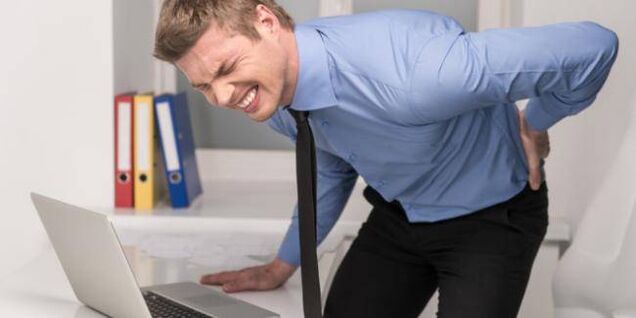
The lumbar spine is the part of the spine that consists of five vertebrae and connects the sacral and thoracic areas.Osteochondrosis of the lumbar spine is a pathological change in which there is a rapid loss of flexibility and a change in the natural anatomical structure of the intervertebral discs.Their gradual deformation occurs.
The basis of radiculitis is the slow destruction of the vertebrae, their loss of moisture and elasticity, as well as a decrease in the ability to absorb shock.The space between the vertebrae gradually decreases and the intervertebral disc can harden, leading to pinched nerve roots.This process is accompanied by severe and cramping pain in the lower back.
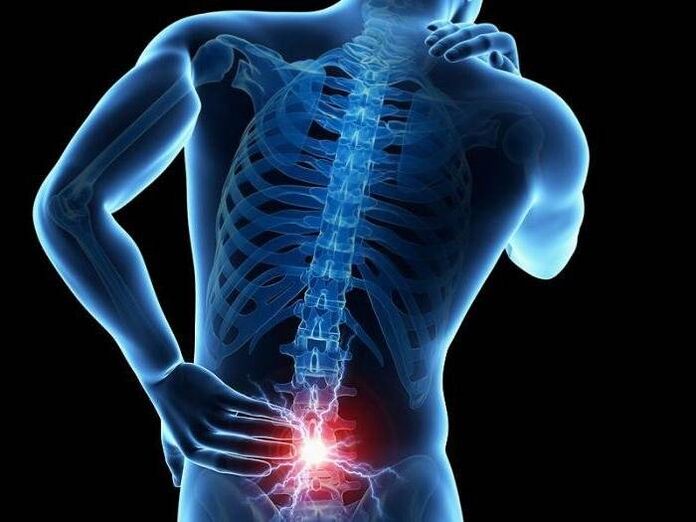
How dangerous is osteochondrosis, its stages?
The course of the disease is accompanied by degenerative-dystrophic changes, which over time can cause complications such as bulges and herniated discs.Such degenerative changes can be the main cause of leg paralysis.
Lumbar osteochondrosis can be accompanied not only by the development of protrusion or herniated discs, but also by other, no less serious, diseases of internal organs and systems.One of the most common complications is sciatic nerve entrapment, which causes severe lower back pain and numbness in the limbs.
Radiculitis can also cause other serious consequences – spondyloarthrosis, osteophytosis, spondylosis, stenosis, lameness, spinal curvature.The disease can also provoke a pathological process in the urogenital and reproductive areas;in women, inflammation of the uterus and ovaries;In men, it causes various potency problems.
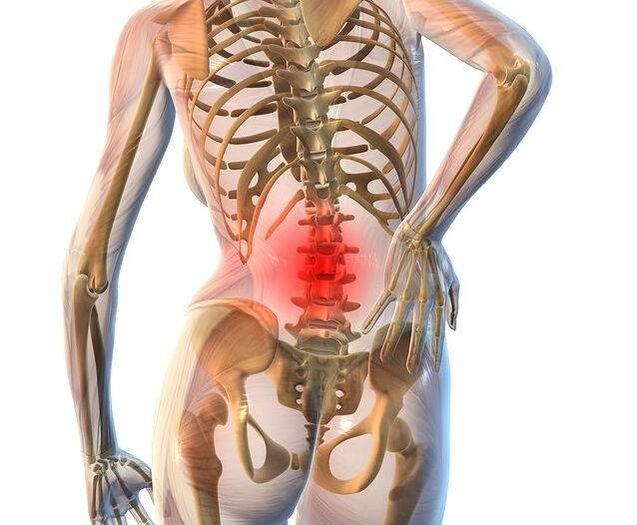
Osteochondrosis of the lumbar spine is divided into several stages:
- The first stage of radiculitis is a “mild” stage in which the pain in the lumbar or sacral region is still mild and only occurs with physical exertion.In the first stage, the process of destruction of the vertebrae is in its initial stages.
- The second stage is accompanied by active destruction of the fibrous rings and a reduction in the size of the intervertebral space.This leads to pinched nerves and causes severe pain.
- The third stage - the destruction of the fibrous rings ends, intervertebral hernias appear.The spine becomes noticeably deformed and twisted, losing its normal anatomical shape.
- The fourth stage of the disease is the most severe.At this stage, a person can no longer walk normally;The fourth stage often ends with a disability.
Symptoms of lumbar osteochondrosis
Symptoms and treatment are determined depending on the stage of development of the disease.
In the first stage, a person usually does not pay attention to the first signs of the disease.Mild pain and discomfort in the lumbar region may occur when making sharp turns or walking.In addition, pain often occurs after sitting or standing in one place for a long time.
The main danger of this period is that the symptoms are not yet sufficiently pronounced and you can simply ignore them, as a result of which osteochondrosis progresses rapidly.
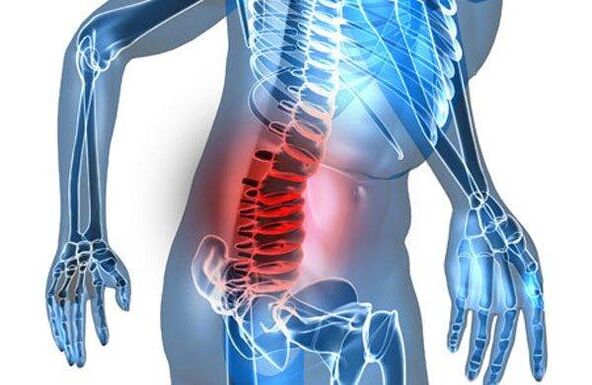
The second stage of radiculitis is accompanied by a decrease in the distance between the vertebrae and, accordingly, severe pain in the lower back and sacrum, which can radiate to the groin and lower extremities.
In the third stage, osteochondrosis is characterized by pronounced symptoms – severe pain, spasms in the back, reduced mobility of the vertebrae and the onset of pathologies of internal organs and systems.This can lead to problems in the urogenital system and gynecological inflammation.
The symptoms of the fourth, most severe stage of the disease are manifested in a noticeable deformation of the spine, which can bend sideways or forward, persistent, severe pain, which intensifies especially during physical movements.In addition, swelling of the muscles and ligaments, loss of sensitivity and numbness in the lower extremities may occur at this stage.
Modern treatment methods
It is recommended to carry out the treatment of osteochondrosis of the lumbosacral spine comprehensively - with the help of medications, physiotherapeutic methods, exercise therapy and herbal medicine.In the most severe cases, surgical treatment is used.
Treatment aims to achieve the following goals:
- Relief from pain in the lumbar and sacral areas.
- Elimination of inflammatory processes in the diseased area.
- Elimination of pathological tension in muscle tissue.
- Activation of blood circulation in the lumbosacral area of the back.
- Improving vertebral mobility, normalizing the sensitivity of the lower extremities.
Drug treatment of radiculitis is an obligatory component of complex therapy for osteochondrosis of the lumbosacral spine.For therapeutic purposes, several drugs are most often prescribed:
- Painkillers are used to relieve pain.However, we must remember that by eliminating pain, analgesics do not treat the cause of the disease.
- In most cases, the doctor prescribes chondroprotectors, which are designed to improve the metabolic processes in the cartilage fibers and prevent their further deformation.
- Nonsteroidal anti-inflammatory drugs – are used to eliminate pain and swelling, release pinched nerve endings, and relieve the inflammatory process in affected tissues.
- To normalize muscle tone, drugs from the category of muscle relaxants are used.
- In some cases, medications with a diuretic effect may be prescribed to relieve swelling in the affected tissues.
- To activate blood circulation in the lumbosacral spine, drugs with vasodilator properties can be prescribed.
- Calcium supplements are often used to increase the strength of bone and cartilage tissue.
In the first and second stages of the disease, medications for external use in the form of ointments, creams and lotions are highly effective.
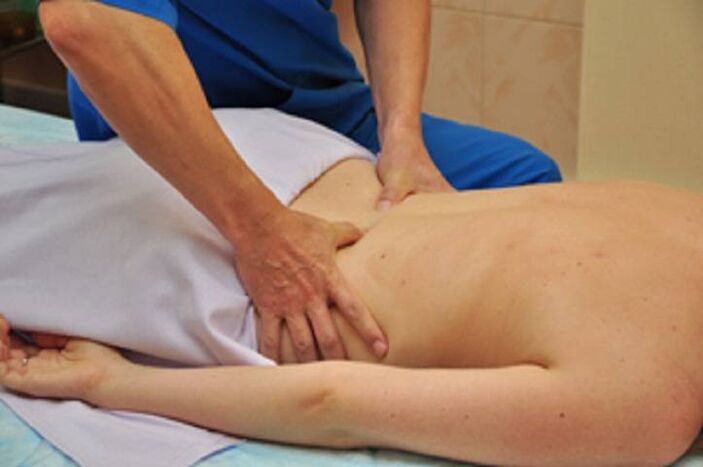
Traditional methods
Traditional medicine offers a wide range of different recipes for the effective treatment of osteochondrosis.The most effective methods are various rubs, massages and compresses.However, it should be noted that traditional methods can only be effective in the initial stages of the disease.
- One of the most famous recipes is cabbage compresses.To do this, all veins are cut off from the surface of the cabbage leaf, then the leaf is lightly beaten with a hammer and applied to the lower back.The compress is fixed with a wide scarf, handkerchief or gauze.It is recommended to change cabbage leaves several times a day.
- Grind 3-4 large cloves of garlic with a garlic press, squeeze the juice from the resulting mass through cheesecloth and separately melt 100 g of pork fat in a water bath.Combine the resulting components in a 1:2 ratio and stir.The composition is used for therapeutic massage and rubbing.
- A tablespoon of ground red pepper should be poured into 250 ml of vodka, after which the container with the medicine should stand in a dry and dark place for a week.The folk remedy is used for rubbing.
- Horseradish rub is prepared in the same way.The grated horseradish root is squeezed out and the resulting juice is mixed with the same amount of vodka.The mixture is used for regular rubbing.
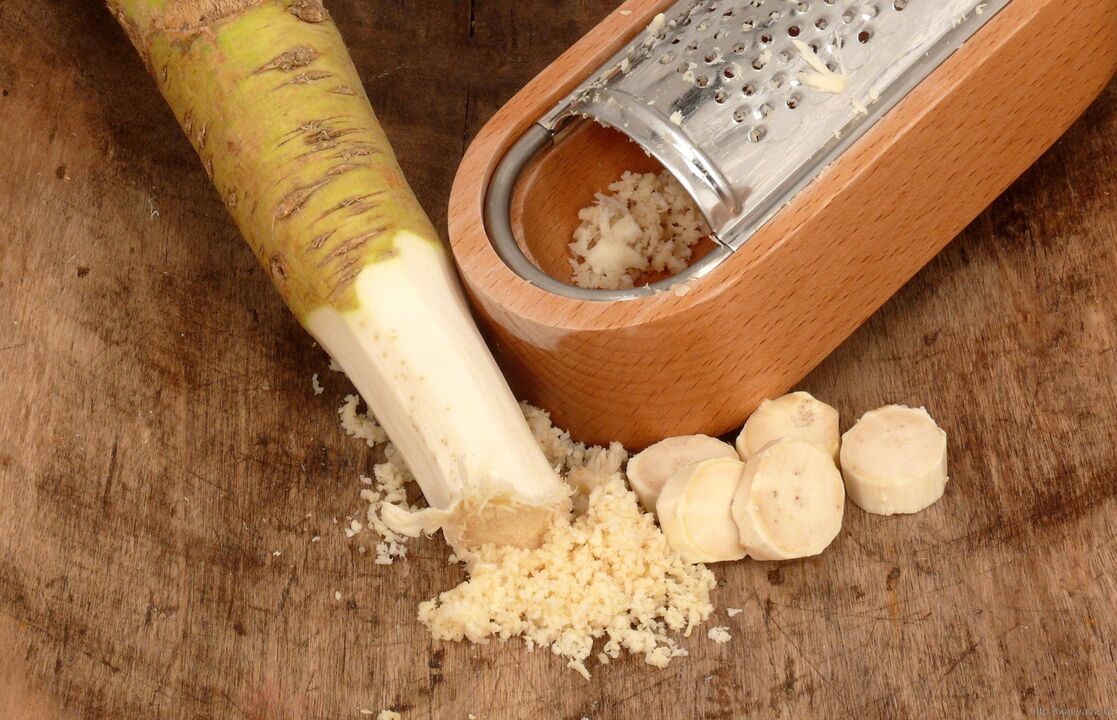
Movement therapy (physiotherapy)
Exercise therapy for osteochondrosis of the lumbar spine allows you to eliminate pain, improve the condition of muscle and cartilage tissue, restore mobility to the spine, significantly strengthen the musculoskeletal corset and “unload” the lumbar spine.
Exercises for osteochondrosis can only be performed if the person does not suffer from severe back pain.The exercises can be very diverse - from a standing position, bend forwards and backwards, left and right, lift your arms up, place them behind your head and tense your abdominal muscles.At the same time, absolutely all therapeutic exercises are carried out under the supervision of a specialist.
What to do if you suspect osteochondrosis?
Radiculitis is an extremely dangerous disease that usually begins unnoticed by people.The danger of radiculitis is that without the necessary treatment, the disease can cause the most unpleasant consequences - even paralysis of the legs and curvature of the spine.
That is why, at the first signs of the disease, it is necessary to consult an orthopedic doctor who will prescribe the optimal course of treatment.Remember: the sooner treatment is started, the faster you can achieve positive results and restore your spine to health.
























